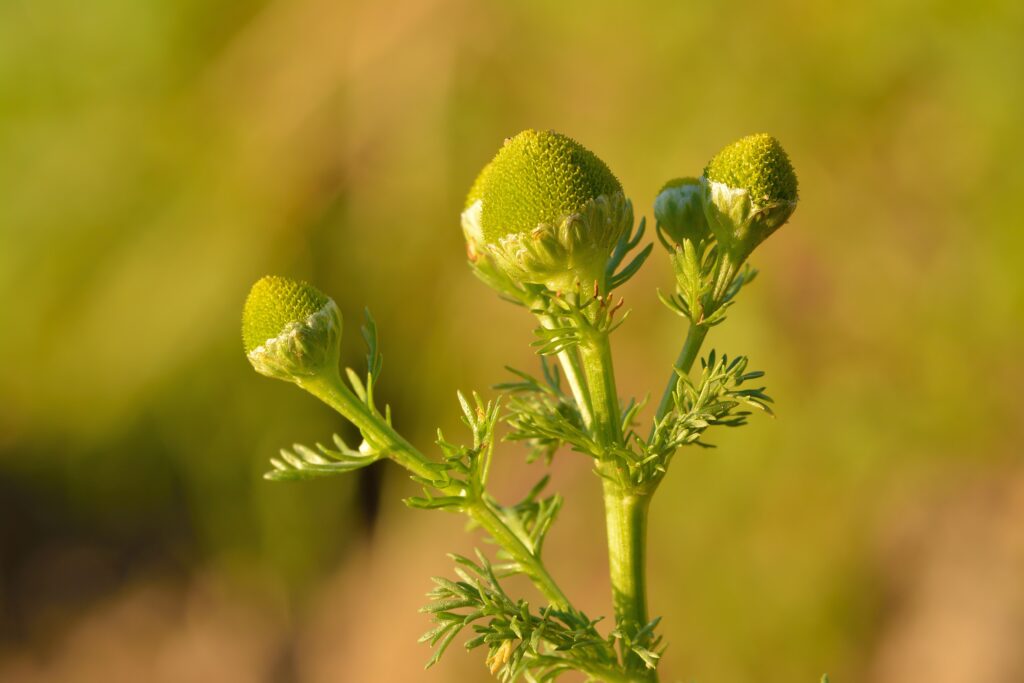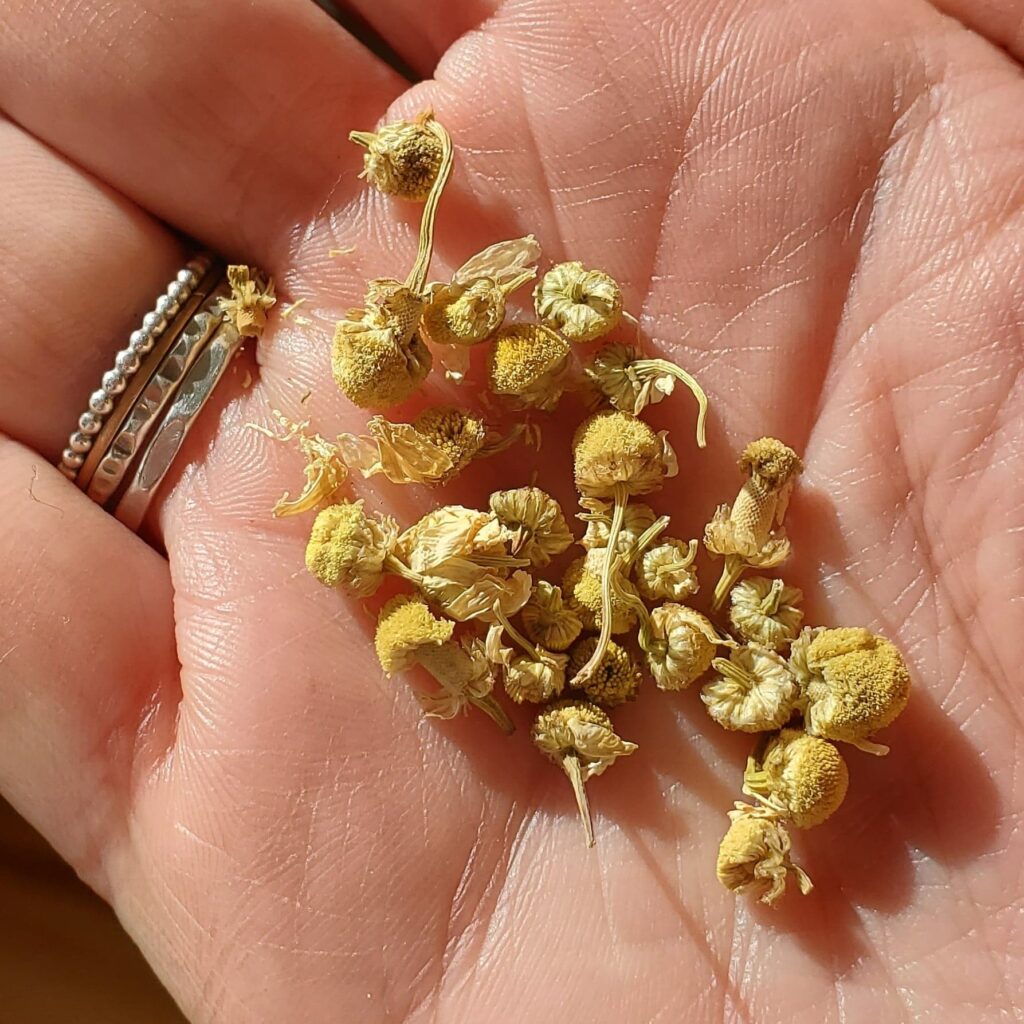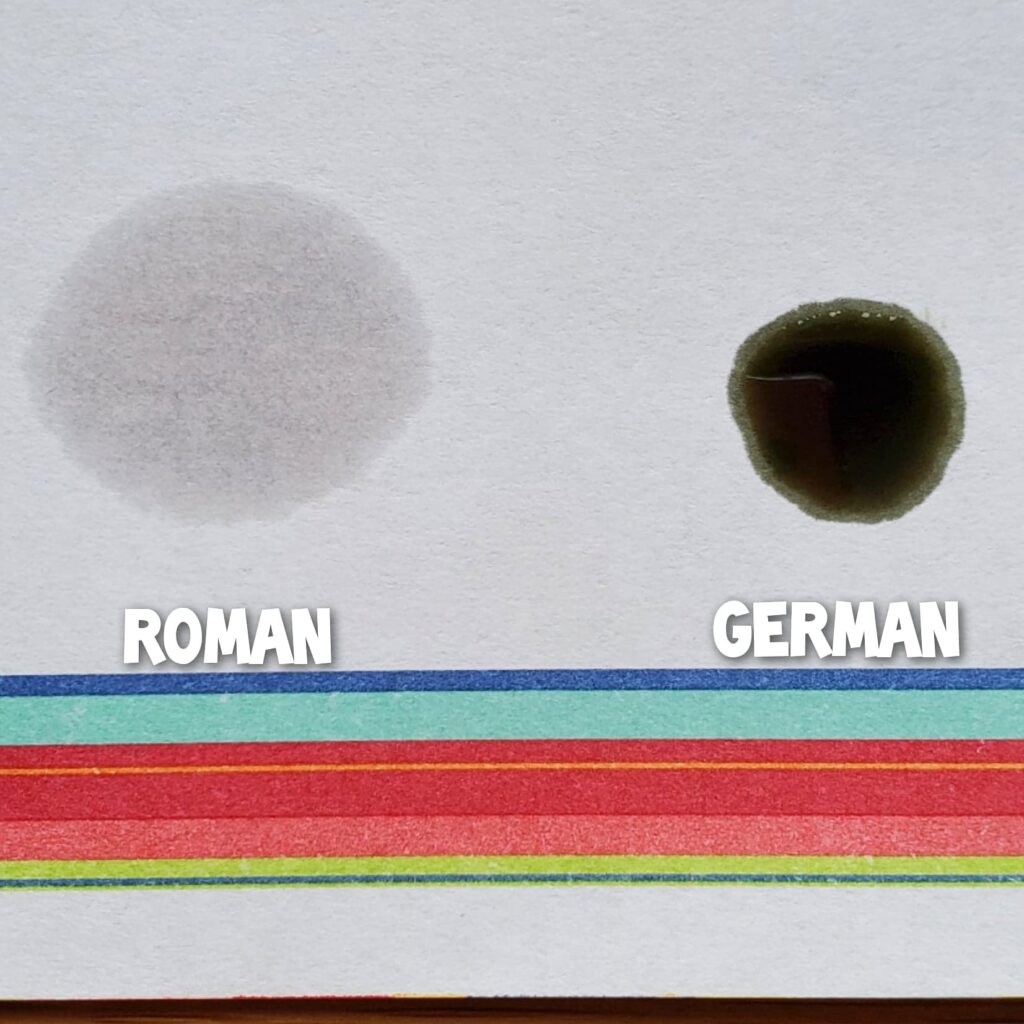Chamomile Calm
Chamomile or Camomile (interchangeable) means ‘earth apple’ in Greek. You might be familiar with pineapple weed? I bet you tasted it, growing out of a sidewalk crack in the 80s (if you’re 44). If you didn’t taste it, you picked it, and crushed it between your fingers, and your mind was blown by the pineapple aroma. Let’s agree that if you pick some out of a sidewalk crack for your salad tomorrow, choose a location that hasn’t been sprayed before you sample.

When we aren’t talking about pineapple weed, as lovely as it is, we’re talking about German Chamomile (Matricaria recutita) or Roman Chamomile (Chamaemelum nobile). They have other nicknames too. Roman Chamomile is sometimes referred to as English Chamomile, because it can be found in English gardens. And German Chamomile is also called Hungarian Chamomile. Although there are differences, in chemical constituents, German Chamomile is shockingly blue when distilled, the plants are mostly the same.
The flowers have tiny white daisy-like petals with a yellow center. Both varieties look very much alike, although some may argue this. When dried, I think you’d be hard pressed to tell a difference.

Let’s talk about herbal actions. Both varieties are anodynes and bring pain relief. I love that chamomile is a safe herb for kiddos. It’s gentle. Both varieties are antispasmodic, and both are calmative. Both varieties will stimulate your liver, kidneys and gall bladder and improve overall digestion. These actions make this herb very versatile and beneficial to incorporate into your regular routine.
What do we use chamomile for in our family?
We drink a lot of chamomile tea, especially before bed, or if we have stomach or digestive stuff going on. A cup of warm tea helps with insomnia and restlessness and almost always helps with belly cramps. Also, menstrual cramps. I always feel like if I’m not certain which herb might work best, this one is always worth a shot. We have an awesome local tea company, Lake Missoula Tea Co, that we’re in love with. There are numerous blends containing chamomile.
I used to make teething popsicles for my kids when they were smaller. These were handy if they had fevers, belly aches, colds or teething pain. I just steeped some chamomile tea and froze it in an ice cube tray or popsicle mold.
We love the tincture of chamomile. There is an Herbs for Kids version on the market that I like for my kids and really for myself. A lot of tinctures can be really bitter, this one is sweet. My kids never balk. If I’m feeling anxious or nervous I take a dropper full.
Roman Chamomile
Chamaemelum nobile is a perennial. This particular variety grows a bit closer to the ground and doesn’t require much love. You’ll often find it in dry fields and between pavers. It is hearty and strong. The essential oil of this variety is clear and the aroma is almost fruity, like an apple or pineapple. It is a quick pain reliever and overall soother when applied topically.
German Chamomile
This variety grows a bit taller than Roman chamomile. It is an annual plant but reseeds itself fairly easily. The essential oil of Matricaria recutita is blue in color. Isn’t it cool how chemical constituents in a plant make this happen? It contains azulene which is an anti-inflammatory and that magical component turns the oil blue.

Chamomile promotes inner peace and clarity and is an herb we always have on hand in our house. It is another herb that is easy to grow. You should put some in your spring plot! In our shop this week, we’ve concocted a delightful love soak for you, it’ll be available for a limited time. xo
